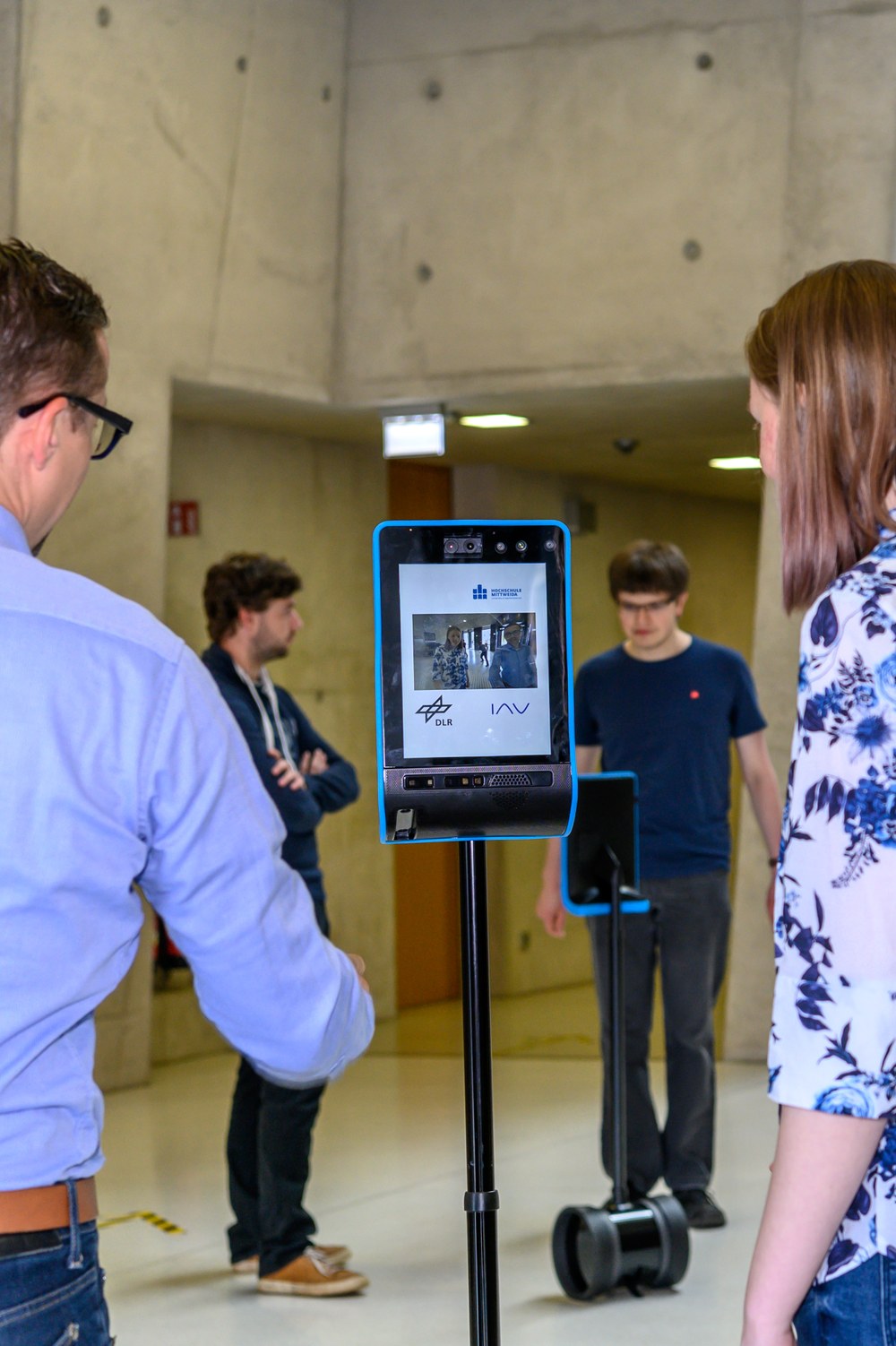AI in the Loop
Autonomous Learning and AI Optimization in a Real-World Environment
The project AI in the Loop addresses the interaction between humans and Artificial Intelligence (AI). The focus is on the safety and reliability of AI applications, and on the question of how adaptations and optimizations can be carried out more quickly during operation. For this project, employees of our DLR Institute, Mittweida University of Applied Sciences, and IAV develop a research environment that allows to directly experience the interaction between AI and its users in everyday life. Project duration until 31.12.2024.
Contribution Institute for AI Safety and Security
The cooperation partners are jointly developing a tool chain with which AI algorithms can be trained directly in real field environments and the behavior of AI applications can be perceived directly and intuitively. To this end, the scientists are setting up a training laboratory at the Sankt Augustin site, where they will test training and implementation procedures with self-driving robots. The focus is on direct feedback of behavior and adaptation of AI algorithms during training.
The project differs fundamentally from previous methods in which AI algorithms are taught or trained with recorded data sets in a separate environment. These methods have limitations, especially for control applications with physical objects (cyber-physical systems), and require subsequent testing in a real environment. The planned tool chain will enable DLR scientists to perform the training loop, including the adaptation of the AI algorithms, directly in real environments with self-driving robots.
For this purpose, an infrastructure (Figure below) consisting of various cloud services and a special software environment on the robots themselves will be set up. The project will develop and test the application and management software of the self-driving robots. This development will follow a DevOp cycle (i.e. a cycle that covers both the development and operational phases), in which the AI algorithms will be continuously adapted during operation. The goal is to later generalize the findings and design principles for safety-critical use cases.

Similar approaches are already being pursued by large data-driven service providers. However, these approaches are limited to their server infrastructure, i.e., they are not used in safety-critical areas such as physical human-machine interaction. The introduction or extension to embedded systems, and thus also to self-driving robots, is therefore a new development. However, it is likely that similar approaches will find their way into commercial development, as they promise to be more efficient and faster due to shorter development cycles and incremental improvements.

